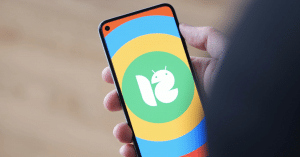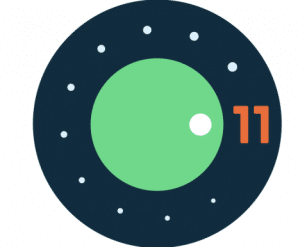Today we will share a Developer Preview of the next milestone release of Android 12.
In the following release, we will comment on the new app launch, the new video and camera capabilities, the new permission for exact alarms, and more. Here are the updates that we’ve listed.
- Improved app launch experience
In Android 12 there is a new app launch animation for all apps from the point of launch, a splash screen showing the app icon, and a transition to the app itself. The new experience brings standard design elements to every app launch, which will be customizable so apps can maintain their branding.
- New call notification template
Incoming and outgoing calls are important to users and they need to be easy to see and manage. In Android 12 all call notifications are improved so that you can give them more visibility and scannability, and improve their consistency with other notification components. If your app handles calls – such as a dialer app or chats app with video calling – you’ll want to try the new CallStyle template.
- New permission for exact alarms
Alarms are an important way for apps to schedule work. In most cases, apps should use inexact alarms. Android manages these alarms to minimize wakeups and battery impacts, such as through Doze and App Standby. For cases where you need alarms with precise timing – for example, alarm clocks and timers you can use exact alarms instead. Apps targeting Android 12 that want to use exact alarms will now need to request new permission, SCHEDULE_EXACT_ALARM. There is also users visibility over the apps that have this permission and letting them a grant and revoke it from Special App Access Permissions in Settings.
- Better web linking
Android changed the default handling of links that aren’t verified through Android App Links or manually approved for links by the user. Now the OS will directly open them in the default browser, rather than showing a chooser dialogue. If you want to ensure that only your app can handle links from your domain, you can use App Links. There are also new ADB commands to help you configure and test your links.
- Rich haptic experiences
There is now informative haptic feedback for UI events, immersive and delightful effects for gaming, and attentional haptics for productivity. It will include expressive effects like a low tick that take advantage of the broader frequency bandwidth of the latest actuators. Game developers can now access multiple, different actuators independently in-game controllers to deliver the same effect synchronously or different haptic effects on multiple actuators. You can try these APIs to the fullest on Pixel 4 devices now.
Video encoding improvements
Android 12 standardizes the set of keys for controlling the range of the video Quantization Parameters (QP), allowing developers to avoid vendor-specific code. The new keys are available in the media format API and also in the NDK Media library. Video encoders must specify a minimum video quality threshold to ensure that users don’t experience extremely low quality when videos are complex.
- Camera2 vendor extensions
Many of our device manufacturer partners have built custom camera effects—such as bokeh, HDR, night mode, and others—that they want apps to use to create differentiated experiences on their devices. The extension APIs expose exactly the same set of effects as in Camera X, and those are already supported on many different devices, so you can use them right out of the box.
- Quad Bayer camera sensor support
Many Android devices today ship with ultra-high-resolution camera sensors, typically with Quad / Nona Bayer patterns, and these offer great flexibility in terms of image quality and low-light performance. In Android 12, there is a new platform APIs that let third-party apps take full advantage of these versatile sensors. The new APIs support the unique behaviour of these sensors and take into account that they might support different stream configurations and combinations when operating in full resolution or ‘maximum resolution’ mode vs ‘default’ mode.

Photo Credits: 9To5Google
- Faster machine learning
Android 12 highlighted the key areas so that developers can make the most of ML accelerators and always get the best possible performance through the Neural Networks API. In terms of performance improvements – there are more than halved inference call overhead by introducing improvements such as padding, sync fences and reusable execution objects. ML accelerator drivers are updatable outside of platform releases, through Google Play services. This will make it easier for developers to take advantage of the latest drivers on any compatible device.
- Standardizing GPU compute
Android is deprecating the RenderScript APIs in favour of cross-platform GPU compute solutions such as Vulkan and OpenGL. Now you can have confidence that your high-performance workloads will run on GPU hardware, and many devices are already shipping with only CPU support for RenderScript. The existing APIs will continue to work for the time being. Android has open-sourced a library for RenderScript intrinsics such as blur that uses the highly-optimized intrinsics platform code.
- Better debugging for native crashes
Android 12 will give us more actionable diagnostics because there will be crash dump files called tombstones to debug our native crashes, and they contain the information required to diagnose a variety of issues. This includes unwinding through ART, integrating with fdsan, and recording all the stacks involved in a GWP-ASan, HWASan, or MTE crash. Now we’re giving your app access to its tombstone files through the App Exit Reasons API. When your app uses `ApplicationExitInfo` with `REASON_CRASH_NATIVE`, you can now call `getTraceInputStream()` to get the tombstone data as a protocol buffer.
- More flexible backup configurations
Android’s backup service lets users restore or migrate their data to a new device effortlessly. Apps are central to the experience, enabling users to easily transfer app data and continue where they left off. The backup service supports both cloud backups to Google Drive and device-to-device transfers, and developers can take advantage of these with minimal changes in their apps.
App compatibility
In Android 12, most app-facing changes opt-in are made to give you more time, including updated tools and processes to help everyone get ready sooner.
Now is the time to try these new features. For complete information, visit the Android 12 developer site.









